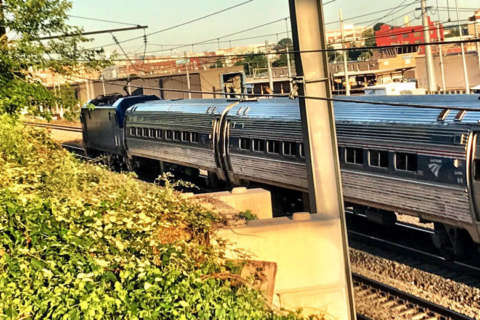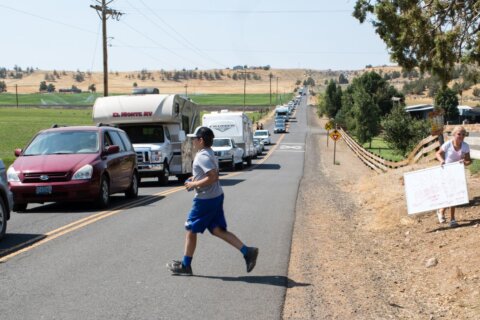WASHINGTON — Two CSX conductors struck and killed by an Amtrak train Tuesday night could not have directly warned the Amtrak engineer that they were on the tracks since CSX and Amtrak operate on different radio frequencies, a union representative said.
The National Transportation Safety Board is investigating the crash, which happened around 11:30 p.m. Tuesday in the Ivy City area. The CSX freight train out of Baltimore had stopped so the crew could investigate a possible wheel problem, and the conductors apparently mistakenly stepped, without proper protections in place, from the two CSX-owned tracks closest to a Metro rail yard into the path of trains on one of the two parallel Amtrak-owned tracks closer to New York Avenue.
Amtrak Train 175, coming from Boston, struck and killed the two conductors. National Transportation Safety Board Member Earl Weener said Wednesday afternoon that it does not appear anyone else was hurt.
Herbert Harris, D.C.’s state representative for the Brotherhood of Locomotive Engineers and Trainmen, said Amtrak engineers have their own radio frequency to communicate with the Union Station terminal and get other instructions along the Northeast Corridor, while CSX has a separate radio system.
“So there wouldn’t have been any interactional communication between the crews unless CSX had notified either Amtrak or possibly the tower in Union Station that they had a crew that was either on the ground or had a train with a problem, and that may very well be one of the issues that they look into: the communication with who, and what if any notification had been given,” Harris said. He represents Amtrak and commuter locomotive engineers.
Weener confirmed communication between, and with, CSX and Amtrak dispatchers is one focus of the investigations.
Communication failures contributed to a more serious Amtrak crash near Philadelphia last year that killed two Amtrak workers, but those problems with work zone protections appear to be different from potential issues tied to this crash.
Witnesses and others involved in Tuesday night’s crash are being interviewed by the NTSB. The crash stopped train service in and out of Union Station much of Wednesday morning.
While CSX and Amtrak are separate railroads, in this area the tracks are right next to each other with no barrier.
“That’s not uncommon, that you have two rail systems parallel to each other. That happens in a lot of locations, and particularly in metropolitan areas,” Harris said. “Every operating train crew … is required to be qualified on the physical territory and geography of the area that they operate in.”
One of the two CSX conductors was on the freight train learning about the layout of the tracks in the area to qualify to work on the route, Weener said.
The union has pushed for D.C. to establish and fund an independent rail safety oversight agency that would allow the District to have its own experts respond to incidents like this one, or the 2015 CSX derailment near the Rhode Island Avenue Metro station.







